 |
 |
 |
| |
Genotypic and phenotypic analysis of the NS5B polymerase region from viral isolates of HCV chronically infected patients treated with BI 207127 for 5 days' monotherapy
|
| |
| |
Reported by Jules Levin
AASLD Nov 2 2010 Boston
Lisette Lagace,1 Mireille Cartier,1 Genevieve Laflamme,1 Carol Lawetz,1 Martin Marquis,1 Ibtissem Triki,1 Marie-Josee Bernard,1 Richard Bethell,1 Dominique G. Larrey,2 Stefan Lueth,3 Christian Trepo,4 Jerry O. Stern,5 Wulf O. Boecher,6 Juergen Steffgen,6 George Kukolj1
1Boehringer Ingelheim (Canada) Ltd, R&D, Laval, Québec, Canada; 2INSERM632-CIC Hôpital Saint Eloi, Montpellier, France; 3Universitätsklinikum Hamburg-Eppendorf, Hamburg, Germany; 4Hôpital Hotel Dieu, Lyon, France; 5Boehringer Ingelheim Pharmaceuticals Inc., Ridgefield, CT, USA; 6Boehringer Ingelheim Pharma GmbH & Co. KG, Biberach, Germany.
AASLD: Strong antiviral activity and safety of IFN-sparing treatment with the protease inhibitor BI 201335, the HCV polymerase inhibitor BI 207127, and ribavirin, in patients with chronic hepatitis C: the SOUND-C1 trial - (11/04/10)
AASLD: Virological response and safety of 4 weeks' treatment with the protease inhibitor BI 201335combined with 48 weeks of peginterferon alfa 2a and ribavirin for treatment of HCV GT-1 patients who failed peginterferon/ribavirin - (11/12/10)
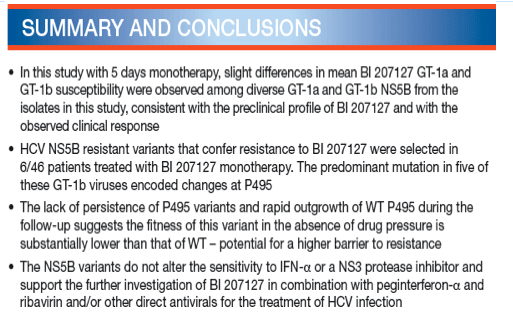
ABSTRACT
Background: BI 207127, a specific and potent non-nucleoside inhibitor of the hepatitis C virus (HCV) RNA-dependent RNA polymerase in vitro, has been studied in patients with chronic genotype (GT) 1 HCV infection for 5 days as monotherapy. The antiviral activity of BI 207127 reached a maximal effect (median 3.8 log10 viral load [VL] decline) for the group receiving 800 mg every 8 hours (Q8H) with no viral breakthrough observed during treatment. NS5B genotypic and phenotypic characterization of viral isolates at baseline and after BI 207127 dosing has been performed.
Methods: HCV RNA was collected and extracted at baseline and at timepoints following the last dose from 60 patients treated with either placebo, 100, 200, 400, 800 or 1,200 mg BI 207127 Q8H. Population sequencing was performed on the NS5B region. Clonal sequencing permitted the quantification and identification of major and minor variants (lower limit of quantification: 5%) in the NS5B region. Chimeric HCV subgenomic replicons were constructed to determine BI 207127 EC50 values against patient-derived NS5B polymerase sequences.
Results: Phenotypic analysis of the NS5B segment derived from patient samples at baseline reveal finalized mean BI 207127 EC50 valuesa of 43±42 nM for GT-1a and 17±22 nM for GT-1b derived samples. Population sequence analysis of baseline and post-treatment samples revealed the selection of NS5B amino acid substitutions in the thumb-pocket 1 domain, consistent with in vitro resistance studies, in 6/25 BI 207127 treated GT-1b infected patients and in 0/21 BI 207127 treated GT-1a infected patients. Reduced phenotypic susceptibility to BI 207127 was associated with the emergence of variants encoding substitutions at position 495 (P495L/Q/S) of the NS5B region, which occurred in 5 patients. Clonal analysis confirmed the amino acid substitutions as the predominant variants in the patient samples. NS5B phenotyping of baseline and posttreatment samples revealed that the five viral isolates encoding P495 changes exhibited up to 400-fold decreased susceptibility to BI 207127.
Conclusion: BI 207127 resistant mutants that encode P495 substitutions were observed in only 5/46 (11%) patients who received 5-day monotherapy. These NS5B variants do not alter the sensitivity to interferon or an NS3 protease inhibitor and support the further investigation of BI 207127 in combination with PegIFN/RBV and/or other direct acting antivirals for the treatment of chronic HCV infection.
aRevised from submitted abstract with updated values

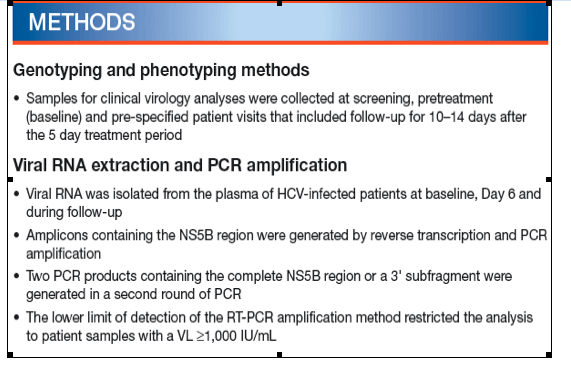
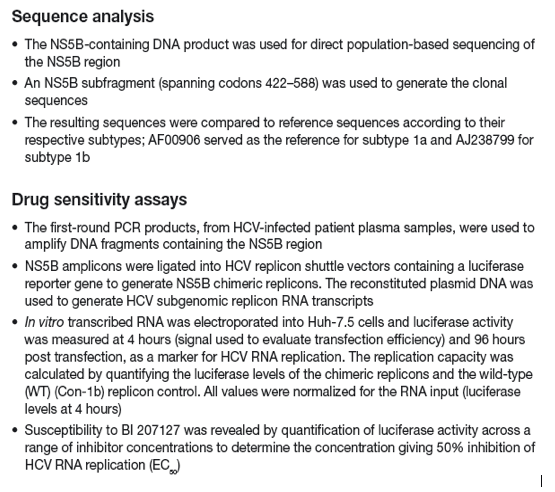
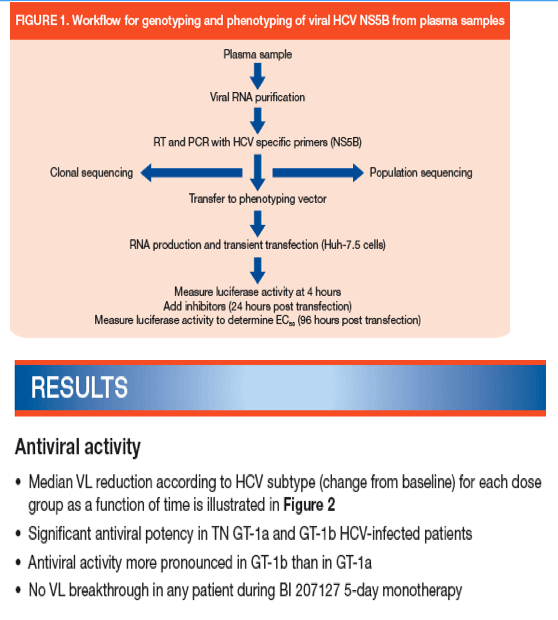


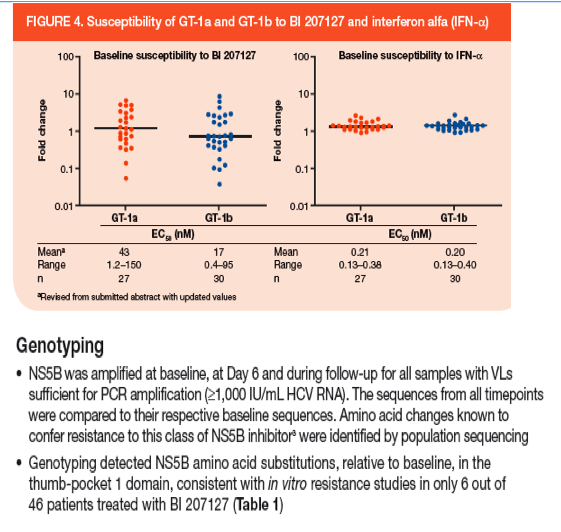
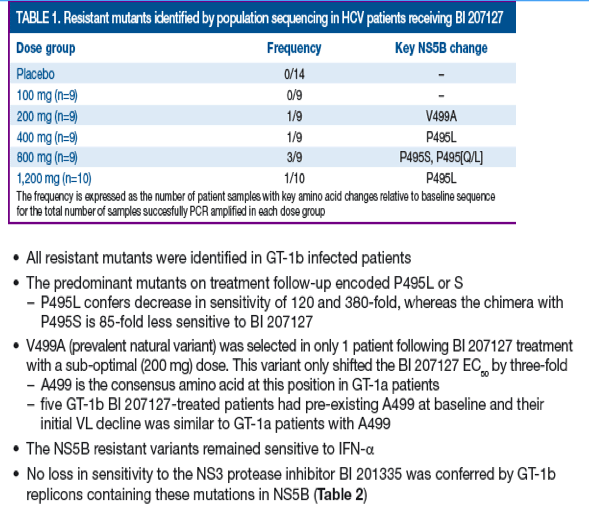
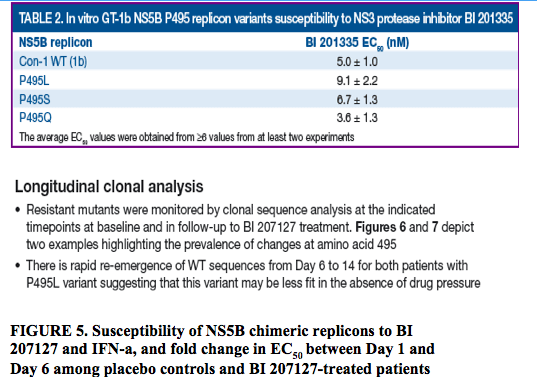
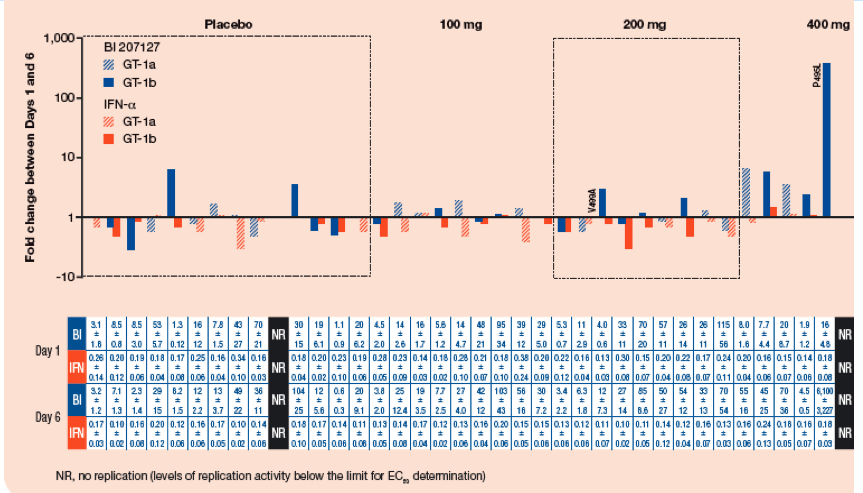
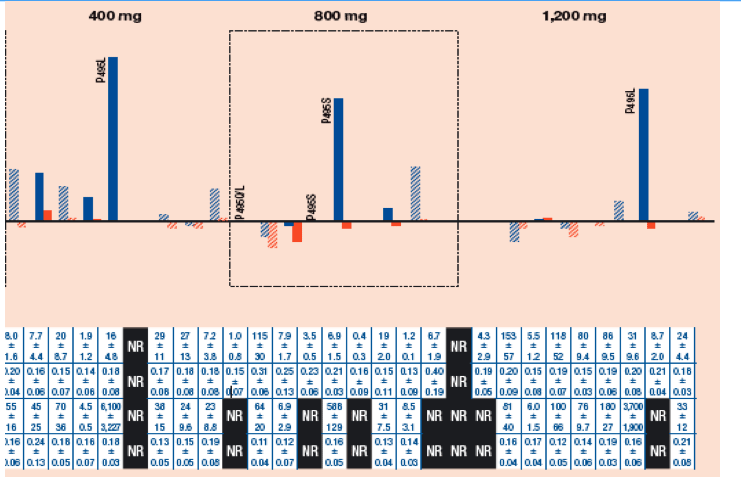
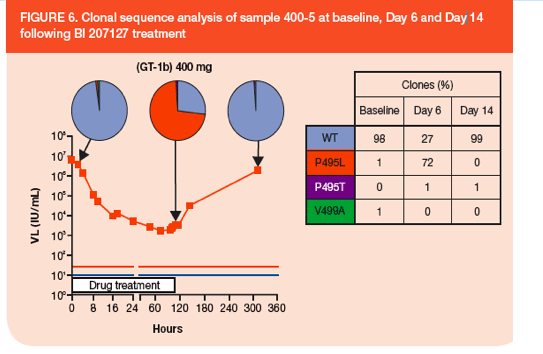
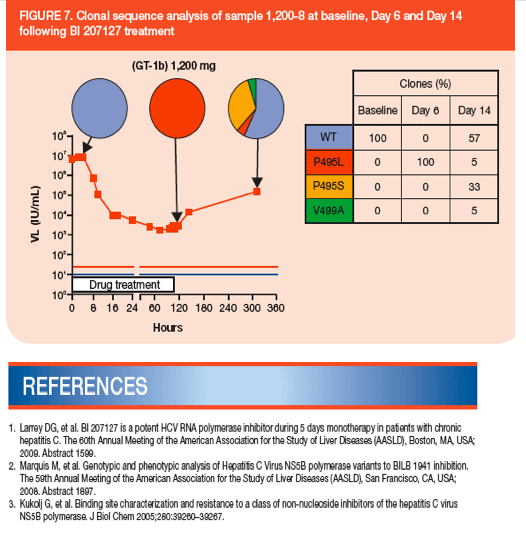
|
| |
|
 |
 |
|
|